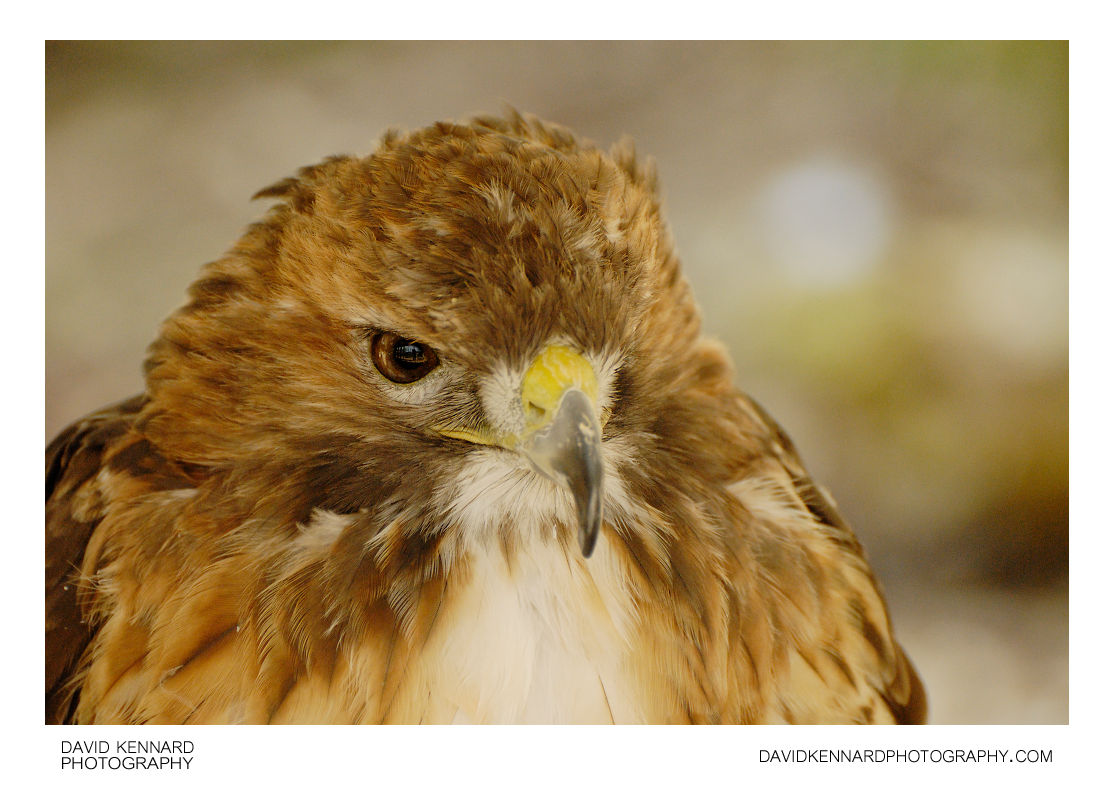Common European Buzzard Buteo buteo

Description
- Title:
- Common European Buzzard Buteo buteo
- Caption / Description:
-
The Common Buzzard (Buteo buteo) is a medium to large bird of prey, whose range covers most of Europe and extends into Asia. It is typically between 51–57 cm in length with a 110 to 130 cm (48–60 inch) wingspan, making it a medium-sized raptor. There are around 40,000 breeding pairs in Britain. It is usually resident all year except in the coldest parts of its range, and in the case of one subspecies.
It breeds in woodland, usually on the fringes, but favors hunting over open land. It eats mainly small mammals, and will come to carrion. A great opportunist, it adapts well to a varied diet of pheasant, rabbit, other small mammals, snakes and lizards and can often be seen walking over recently ploughed fields looking for worms and insects.
Buzzards do not normally form flocks, but several may be seen together on migration or in good habitat. The Victorian writer on Dartmoor, William Crossing, noted that he had on occasions seen flocks of 15 or more at some places. Though a rare occurrence as many as 20 buzzards can been spotted in one field area, approximately 30 meters apart, so cannot be classed as a flock in the general term, consisting of those males (and females) without a mate or territory. They are fiercely territorial, and, though rare, fights do break out if one strays on another pair's territory, but dominant displays of aggression will normally see off the interloper. Pairs mate for life. To attract a mate (or impress his existing mate) the male performs a ritual aerial display before the beginning of Spring. This spectacular display is known as 'the roller coaster'. He will rise high up in the sky, to turn and plummet downward, in a spiral, twisting and turning as he comes down. To then rise immediately upward to repeat the exercise.
This broad-winged raptor has a wide variety of plumages, and in Europe can be confused with the similar Rough-legged Buzzard (Buteo lagopus) and the only distantly related Honey Buzzard (Pernis apivorus), which mimics the Common Buzzard's plumage for a degree of protection from Northern Goshawks. The plumage can vary in Britain from almost pure white to black, but is usually shades of brown, with a pale 'necklace' of feathers.
The call is a plaintive peea-ay, similar to a cat's meow.
Description from Wikipedia: http://en.wikipedia.org/wiki/Buteo_buteo
- Tags / Keywords:
-
- Biota
- Life
- Vitae
- Eukaryota
- Animalia
- Animals
- Chordata
- Chordates
- Aves
- Birds
- Accipitriformes
- Accipitridae
- Hawks and Allies
- Buteo
- Buteonine hawks
- Buteo buteo
- Common Buzzard
- Common European Buzzard
Admin
- Date Original Photo Taken:
- Original File Name:
- _DSC8743a.nef
- Event:
- Rating:
- ☆☆
- Date this image added/last updated on website:
- Original File Dimensions:
- 3872px x 2592px
- File Type:
- JPEG
- Color Mode:
- RGB
- Original Image Color Profile:
- Nikon Adobe RGB 4.0.0.3001
Location
- Location Shown:
-
- Sublocation:
- Rutland Falconry & Owl Centre
- City:
- Oakham
- Province/State:
- Rutland
- Country:
- United Kingdom
- World Region:
- Europe
- Location Created:
-
- Sublocation:
- Rutland Falconry & Owl Centre
- City:
- Oakham
- Province/State:
- Rutland
- Country:
- United Kingdom
- World Region:
- Europe
- Geo-location:
- 52.681925588053, -0.66299479767778 View on map
Rights
- Copyright Status:
- Copyrighted
- Licensing Status:
- Rights Managed
- Available for Editorial Use:
- Yes
- Available for Commercial Use:
- No
- Copyright Notice:
- © 2010 Dave Kennard
Camera Data
- Date Digital Resource was created:
- Shutter speed:
- 1⁄160 s
- Aperture:
- f/5.6
- Camera Model:
- Nikon D200
- ISO:
- 800
- Exposure Compensation:
- 0
- Focal Length:
- 240mm
- Focal Length (35mm equiv.):
- 360mm
- Metering Mode:
- Multi-segment
- Flash:
- No Flash
- Exposure Mode:
- Auto
- White Balance:
- Manual
- Light Source:
- Cloudy
- Exposure Program:
- Aperture-priority AE
Additional shooting metadata
- Lens:
- Nikon AF-S VR Zoom Nikkor ED 70-300mm F4.5-5.6G(IF)
- Filters used:
-
- B+W UV 010 MRC
- Additional Optics used:
- Setup:
- Handheld
Post Processing
- Image Modified:
- Software used:
-
- Nikon Capture NX 2
- Post Processing:
Curves adjustment to increase contrast in Capture NX 2
Colour Control Point used to add contrast to eye in Capture NX 2
